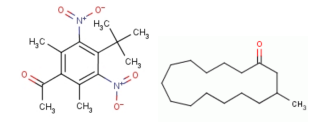MUSK KETONE
-
- Category :
Fragrances and Aroma chemicals
- CAS NO : 81-14-1
- EC NO : 201-328-9;208-795-8
- Molecular Formula : C14H18N2O5;C16H30O
- Main Specifications : 99%
- Synonyms : 3-Methylcyclopentadecanone;3-Methyl-1-cyclopentadecanone;5-Methyl-1-cyclopentadecanone;AI3-38746;Cyclopentadecanone, 3-methyl-;FEMA No. 3434;HSDB 1219;Methylexaltone;Moschus ketone;3-Methylcyclopentadecan-1-one;3-Methylcyclopentadecanone, dl-;4-tert-butyl-2,6-dimethyl-3,5-dinitroacetophenone;4'-tert-butyl-2',6'-dimethyl-3',5'-dinitroacetophenone;1-(4-tert-butyl-2,6-dimethyl-3,5-dinitrophenyl)ethanone;Musk Ketone;
Package: 25KG/drum
Uses : Daily Flavor, Food Flavor, Industrial Flavor
Molecular Structure:

Product description:
Musk: any of various powerful-smelling substances obtained originally from the musk glands of male musk deer during the mating season for sexual attraction or from certain animals such as otter or civet. It is used in perfume as a scent and fixative. It is obviously the first importance in perfumery as it features the better properties in not only penetration but also persistency than any other known substance. It scents huge space without even small loss of weight. But synthetic musks should replace for natural must to protect animals. Muscone, 3-Methylcyclopentadecanone, is the major constituent of natural musk. The odoriferous nucleus of natural musk is the C-16 cyclic ketone (cyclopentadecanone). But synthetic musklile products are based on the symmetry of the three nitro groups or on polycyclic and cyclopentadecanone structure
